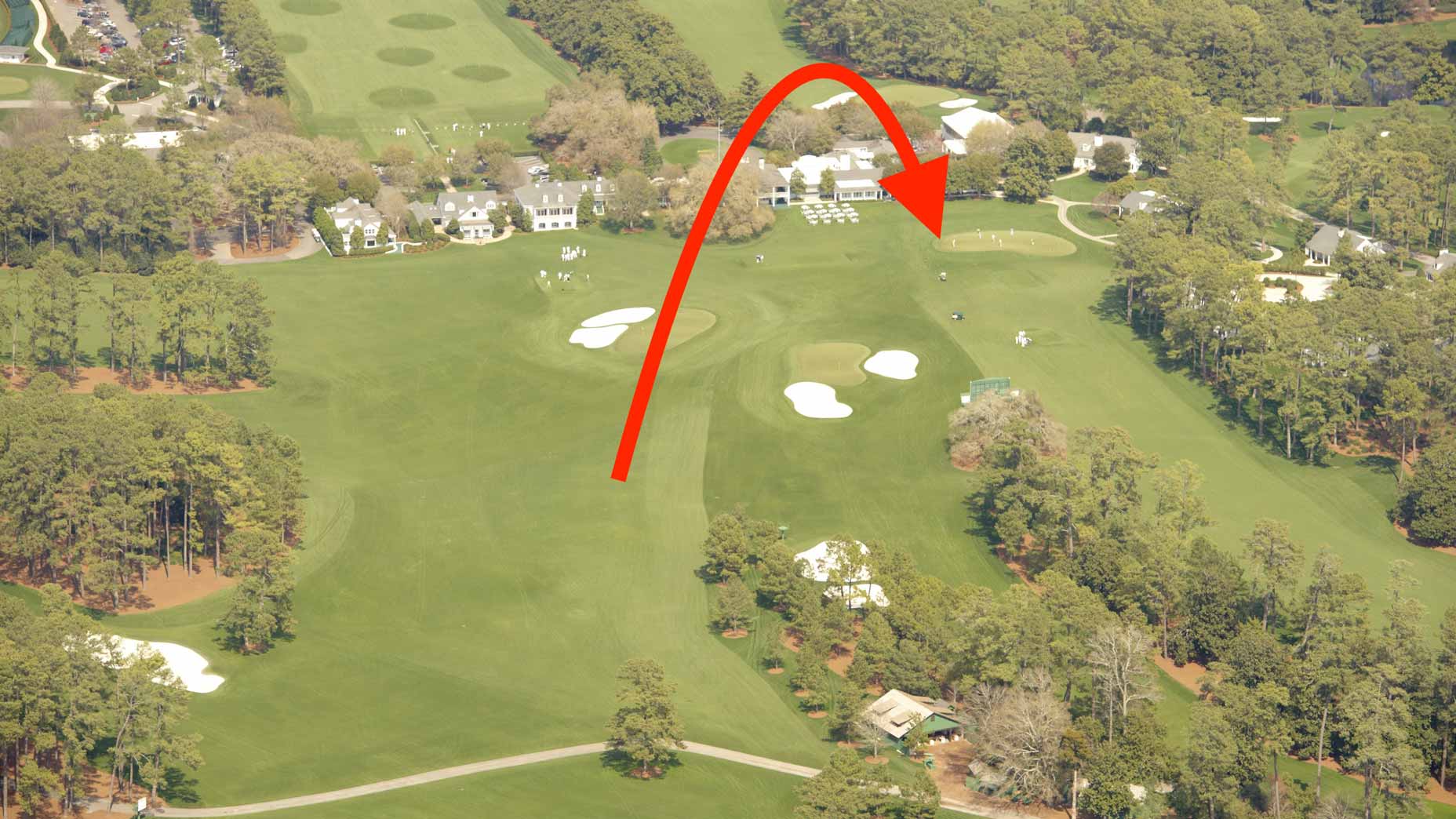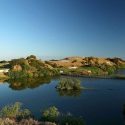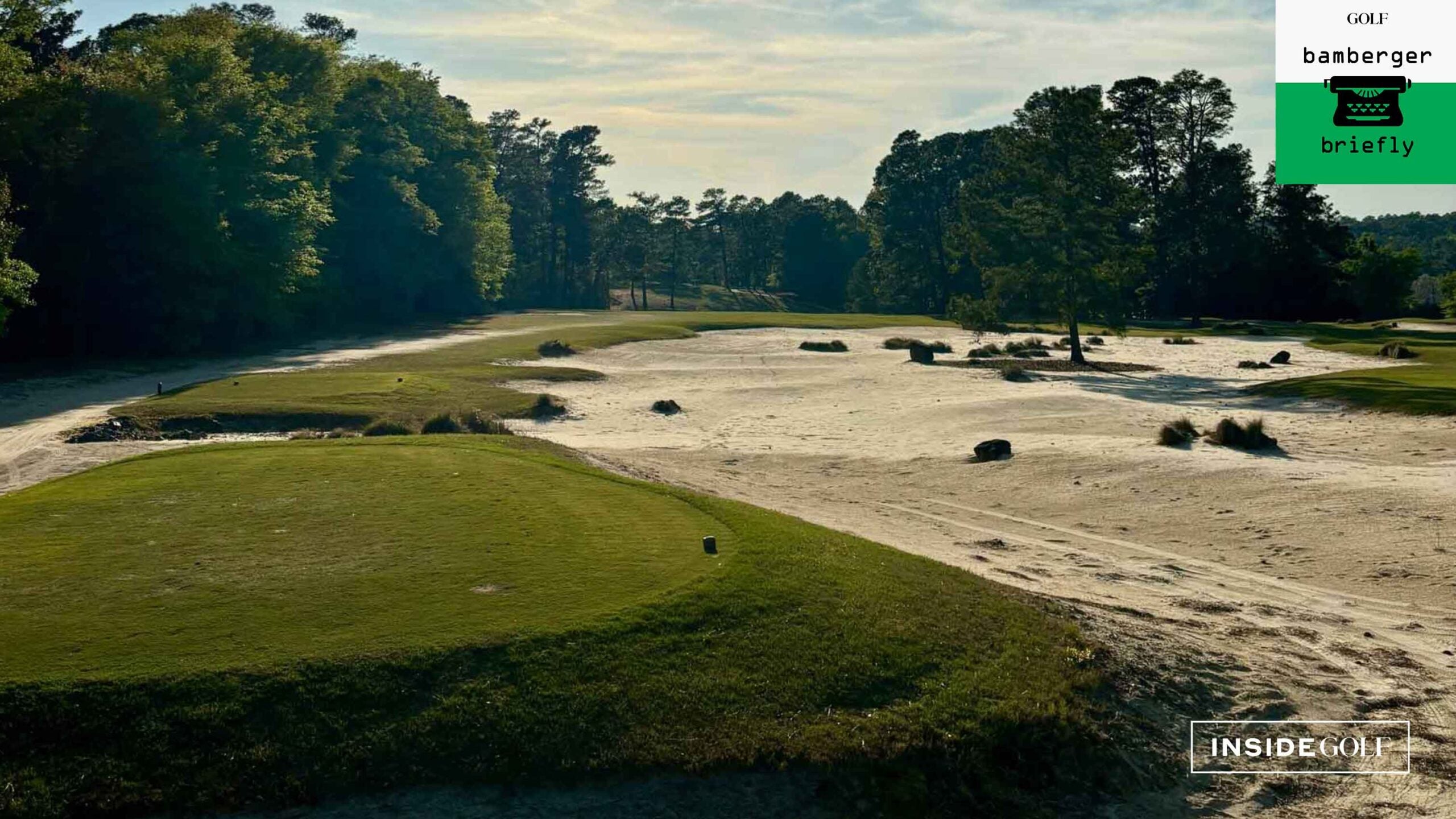 Augusta National planned a 19th hole. What happened?
Augusta National planned a 19th hole. What happened?
What is an Eden hole? And how can identifying one help your game?

Welcome to A Beginner’s Guide to Golf Course Design, where we dig into the history, design and meaning of golf course architecture terms you’ve probably heard before but might not fully understand. We’ll explain all of the above in an accessible Q&A format, and better yet, teach you how to identify these features and plan your attack for the next time you see one, saving you strokes along the way. In this installment, we’re breaking down Eden holes.
Eden? Like the Garden of Eden?
Yes, we’ve found it! The long search is over, and it’s where many of us knew it would be all along: on a golf course. OK, this is only sort of true. The whereabouts of the Garden of Eden remains a mystery, but there is a golf template hole called an Eden, which is worth exploring.
Where did the Eden hole originate?
The original Eden is the 11th at the Old Course at St Andrews called, “High-Hole-In.” The hole is the furthest from the clubhouse and is bordered along the back by the Eden river, where the template derives its name. Like the other templates, C.B. Macdonald brought the idea from the hole back to the United States and implemented it in many of his designs. Many consider the Eden the second-best par-3 design in the world, right behind the Redan.
The par-3 11th at St. Andrews has a severe green that slopes from back to front, The so steep that downhill putts often roll right off the green. There are four distinct hazards on the 11th that have been adapted for an Eden template hole. Not every Eden has all of these features, but they usually have most of these. There is the hill bunker on the left front side of the green, the Strath’s bunker on the front, a cockleshell shaped bunker short of the green, and the Eden river (often reimagined as a bunker) running behind the green.
In most instances, an Eden will play somewhere around 160-175 yards, and the green is often shaped like a teardrop with the point facing the tee box.
Let’s run through each of these features and how they affect the hole.
Eden bunker: On the original at St. Andrews, this is the actual Eden River, which this hole derives is name from. Because many courses aren’t so lucky to have a natural river for this hole, many of the best renditions use a strip bunker behind the green to mimic the original shoreline. Missing long into the Eden Bunker is a bad spot to be, as the green will slope away from your bunker shot.
Strath’s bunker: Strath’s bunker at St. Andrews is one of the deadliest on the planet. This deep pot bunker at the front of the green is named for Davey Strath, a famous gambler who used to make the rounds at the Old Course. Coming up short into this bunker is a scary proposition as well; just getting out can be an issue. Blasting out, then hitting a downhill putt too fast and it rolling back into the bunker again is a real possibility, and one that can destroy any round. This bunker is usually kept in its original form as a pot bunker, but this isn’t the case everywhere.
Hill bunker: The left of the green is guarded by the deep Hill bunker, and the grass face causes a downhill slope on that side of the green. Being overaggressive and ending up in this bunker is difficult because your bunker shot needs to get high, but then will land on a downhill slope.
Cockleshell bunker: On the St. Andrews Eden, there is a bunker short and right to penalize bad misses. It is called the cockleshell bunker because, well, it’s in the shape of a cockleshell. This bunker is less necessary to the design of the template, but many architects have added it anyway. In bringing the design to the U.S., Macdonald and Raynor often played the hole over water instead to penalize bad misses rather than the short bunker.
Many U.S. courses with Eden par-3s have lengthened the hole over time to keep mid-irons in players hands as the original design intended. The key to this hole is have precise distance control and try to find a way to have an uphill putt.
So, how best to play a hole Eden hole?
The key to an Eden hole is to keep your ball below the hole. The problem with finding any bunker is that it will be difficult to keep the ball below the hole and still on the green. This is one of those shots where you have to step up to the tee with confidence in your club selection and hit a good shot. It’s also important not to compound mistakes. If you find a bunker or end up above the hole, play it safe, be okay with a bogey, don’t let this hole ruin your round.
ADVERTISEMENT
Can you identify some of the best Eden holes?
Fishers Island, No. 11: Many consider the 11th at Fishers Island to be the best Eden in the United States. Backing up to the water, the hole is in a pristine location on the property featuring gorgeous grass-faced bunkers on either side. The peninsula of the green looks like a little slice of heaven.
National Golf Links of America, No. 13: Playing over water, the 13th at National Golf Links of America is one of the best renditions of the famed template par-3. The green is much bigger, if less severe, than the original, making for an intriguing challenge. Even with the water short, Macdonald still included a Cockleshell bunker, and the Strath bunker can be deadly.
Camargo Club. No. 5: The first par-3 of the day at Camargo is probably the best. The 179-yard Eden template is striking, with the Hill bunker on the left sitting some twenty feet below the surface of the green. There is an opening at the front of the green, and a good draw can still result in a solid birdie try.
St Louis Country Club, No. 3: The third hole at St. Louis Country Club is one of the longest Edens out there at 210 yards. Any shot that goes long will likely end up in a back bunker four feet below the putting surface, while anything short will probably find the hill or Strath bunker, even further below this difficult green.
Mid Ocean Club, No. 3: Macdonald ventured outside the US for very few courses, but he did make his way to Bermuda for the Mid Ocean Club. The third is a wonderful Eden playing 190 yards. The green is a shallow target, and left pin locations play up against the water, making a pull a scary prospect. Just like at St. Andrew’s, weather and wind conditions are a huge part of the challenge here.
Shinnecock Hills, No. 17 (sort of!): The 17th at Shinnecock Hills is an almost-Eden in many ways. The hole was refined during Macdonald’s time at the course. The hole plays like an angled Eden, with the three bunkers to the left playing like the Hill, Strath and Cockleshell bunkers, while the green also slopes in that direction. The back right has an Eden bunker with the green sloping away. This version is a great challenge for the penultimate hole of a major championship.
To receive GOLF’s all-new newsletters, subscribe for free here.
ADVERTISEMENT







